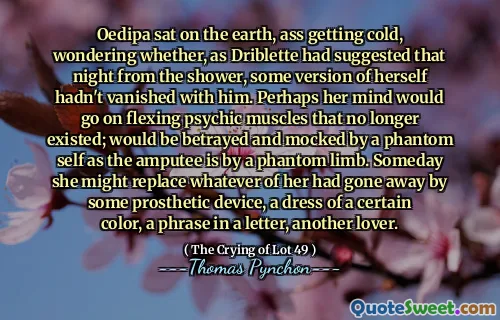...part of me must have really wanted to believe--like a child hearing, in perfect safety, a tale of horror--that the unconscious would be like any other room, once the light was let in. That the dark shapes would resolve only into toy horses and Biedermeyer furniture. That therapy could tame it after all, bring it into society with no fear of its someday reverting. I wanted to believe, despite everything my life had been. Can you imagine?
The excerpt reflects a deep yearning for understanding and control over the unconscious mind. The metaphor of a child listening to a scary story while safe suggests a desire to confront fears without genuine danger. The narrator hopes that, once illuminated, the darkness of the unconscious could transform into something familiar and benign, akin to toys or furniture, indicating a longing for resolution and normalization of chaotic thoughts and feelings.
This desire reveals a struggle between hope and reality. The narrator wishes for therapy to bring clarity and peace, allowing the unconscious to integrate into everyday life without the threat of regression to darker times. Despite past experiences that challenge this belief, there's an underlying wish for redemption and understanding that resonates with the human condition's complexity.







